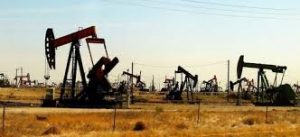
Economic leaders including those from the oil and gas industry admit they’re concerned about the economic impact of the COVID-19 pandemic on the Permian Basin and southeastern New Mexico.
But oil and gas leaders sought to ease economic concerns stemming from the historic decline in the market in addressing the Carlsbad community at the city’s recent annual Energy Summit reported the Carlsbad Current-Argus.
Before the pandemic, the Permian Basin led the nation in oil and gas production and activity in southeast New Mexico and West Texas.
But in April, the price of West Texas Intermediate (WTI), a grade of crude oil used as a benchmark for domestic pricing, fell to about -$40 per barrel — the first time in history prices plummeted below $0 per barrel.
The result was a collapse in Permian Basin activity as rig counts fell, wells were shut in and workers were laid off.
Rick Cannon, manager of Delaware Basin production for XTO Energy said he was optimistic about the major oil producer’s position in the Permian both in New Mexico and Texas reported the Carlsbad Current-Argus.
Despite XTO’s parent company ExxonMobil announcing in April that it had reduced its capital spending by 30 percent and lower operating expenses by 15 percent in response to the pandemic and market collapse, Cannon said the company plans to continue operations in the region and efforts to curb its environmental footprint through efforts such as emission reductions.
He said ongoing operations in the region could allow XTO to capitalize on the market’s recovery.
“2020 has not gone according to anyone’s plans,” Cannon said. “While overall activities have reduced, we’re still very busy in the basin. We’ve continued to maximize long-term value to put us in a strong position when the market recovers.”
He pointed to increases in the price of oil and gas leases up to $80,000 per acre as a driving force behind the industry becoming more and more expensive to operate.
“I’m cautious about shale. We throw around numbers that are enormous. It’s not about pessimism or optimism out here. It’s about what does it cost to do it.”
Munn said that when confronted with a lower-price market — as WTI was presently reported at about $40 per barrel per data from Nasdaq compared with more than $60 per barrel last year before the pandemic hit — companies must find new ways to profit.
That could mean capturing more natural gas as opposed to flaring it, and sending that resource to market to be sold, or seeking to use market produced water as research shows operators can generate up 10 barrels of water per barrel of oil in the Permian.
“Make something out of it,” he said of excess natural gas. “I have no doubt the people out here are tough. But sitting around hoping for $80 is not what you need to do. You need to work with what you have. It’s not that we should be fearful of the future, but we should be looking at what do with what you have.
“We need to be responsible for our own economics of extraction, not advertise to the rest of the world how many barrels you’ve got.”
Source: Carlsbad Current-Argus






